
Strokes of Genius
The latest equipment proves the industry is as forward-thinking as ever.
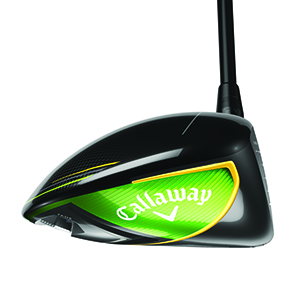
Thousands of virtual simulations and prototypes came before the Callaway Epic Flash. Conventional driver design is symmetrical, where the clubface is thickest in the center and thinnest at the perimeter—until Callaway proved that to be an inefficient design. Utilizing artificial intelligence, the company’s team of engineers programmed a computer to understand how the geometry of a clubface affects ball speeds and durability. This optimized solution for maximum ball speed “is not very predictable with all these ripples and waves,” explains Evan Gibbs, Callaway Golf ’s director of R&D for woods. “It looks very different than any face we’ve ever seen, but it’s very effective.” The club is also manufactured differently—the face is first forged, then machined into shape, and finally laser-welded onto the body. “The architecture is so complex,” Gibbs says, “that if you used traditional casting methods, some of the features would get washed out.” $530; callawaygolf.com
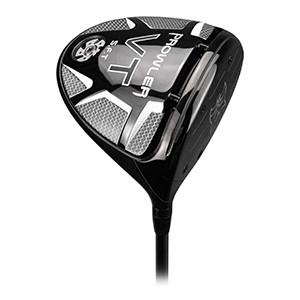
Not only does the Lynx Prowler VT deliver adjustable lofts, but it does so in a revolutionary way that took the brand almost a decade to perfect. A traditional adjustable driver utilizes a changeable mechanism in the hosel that unavoidably changes a club’s lie and face angles. The Prowler VT features interchangeable faceplates that prevent those unwanted secondary changes. The weight that is saved by eliminating that hosel mechanism is then repositioned (with the faceplate screws) around the perimeter of the club, increasing the club’s moment of inertia (MOI). At least 25 different faceplates are available, ranging from 8 to 12 degrees of loft, some with close- or open-face angle configurations to deliver a fade or draw bias. $525; lynxgolfusa.com
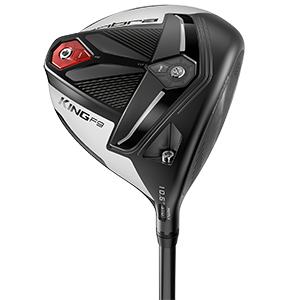
Driver design is a tug-of-war between aerodynamics and a low center of gravity (CG), which is crucial for performance, as it allows for the most efficient transfer of energy from the club to the ball during the swing. The Cobra King F9 proves there’s a way to achieve both. By creating a CNC precision-milled driver face that is five times more precise than hand-polishing—and through the development of a carbon fiber–wrapped crown design that reduces the clubhead’s total weight by an additional 10 grams—Cobra’s engineers have built adjustable weight into the sole of the club, which pulls the center of gravity down, even as the crown was raised to be more aerodynamic. The end result is faster club speed and greater precision. $450; cobragolf.com
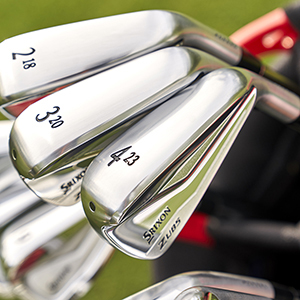
The wide sole of the Srixon Z U85 is on full display when positioned in a player’s bag. Just the sight of it inspires confidence, suggesting that the club is easy to hit—and it is—yet that width is not completely concealed when a golfer looks down at the club in his or her hands. That’s not necessarily a bad thing; in fact, it’s something to embrace, especially when the club is an 18-degree 2-iron. Constructed from soft carbon steel, the model features a hollow-body (like a hybrid) that allows the club’s CG to be positioned lower and farther away from the clubface, which creates higherlaunching ball flights. $200; srixon.com
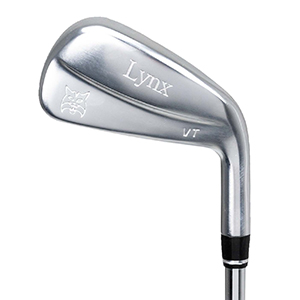
Simply put, there’s a lot of muscle in the Lynx Prowler VT Stinger’s muscle-back design. Most golfers will require a bit of time adjusting to the sight of that bulbous back end, but the piercing ball flights of their shots will be certain to help with the adjustment. Available only in right-handed configurations and only with 16 degrees of loft, the Prowler VT Stinger features a hollow clubhead design that is thicker around the periphery than in the center. That added thickness—and weight—around the perimeter of the club reduces sidespin and improves distance on off-center shots. $129; lynxgolfusa.com
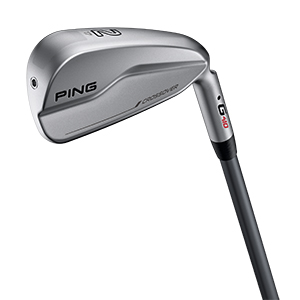
Available in three lofts—17, 20, and 23 degrees— the Ping G410 Crossover utility iron is equipped with a 30-gram tungsten weight in the toe, which increases the club’s MOI and makes it almost as forgiving as a hybrid. Enhanced by a thin steel face, it produces similar distances when compared to an identically lofted G410 hybrid; however, unlike a hybrid, the crossover’s streamlined body and thin topline will appeal more to players who like the shot-making capabilities—and the classic aesthetic—of a traditional iron. $248; ping.com
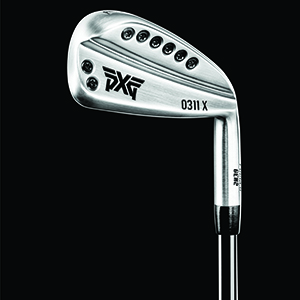
Unlike the Srixon Z U85, the characteristics attributable to the PXG 0311 X Gen2 (the second-generation PXG driving iron) are impressive but largely hidden from view. An inner cavity injected with a proprietary, synthetic material features a cutout perimeter that increases the functional area of the clubface by 15 percent. That synthetic material has also been engineered to more efficiently transfer energy at impact, which increases ball speeds. A clubface only 1.5 millimeters thick and a tapered heel-to-toe design on the back of the club allow more weight to be positioned near the toe for greater stability and more forgiveness. $400; pxg.com
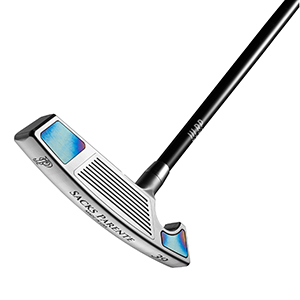
Mallet-style putters have long trumped timeless, streamlined shapes by offering the average golfer more stability and better results thanks to higher MOI. Sacks Parente Golf Company, through its new Series 39 putters, has found a way to engineer a symmetrical, heel-mounted blade with an ultra-low balance point. Sacks Parente achieves this through custom grips and carbon-fiber shafts that weigh less than 35 grams; stainless steel heads equipped with face inserts made from a lightweight, proprietary alloy; and more than 120 grams of high-density tungsten set into the heel and toe of the clubhead, which drastically reduces the putter’s inclination to twist or deflect during the putting stroke. $600; sacksparente.com
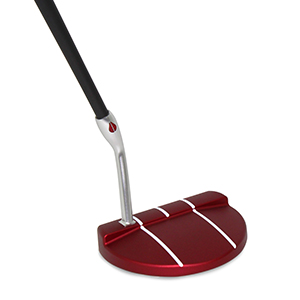
Thanks to its thin, tapered, carbon-fiber shaft and a thin rubber wrap that replaces a traditional grip, this putter from Bloodline Golf has a balance point set only an inch or so above the clubhead. That made it possible for Bloodline’s engineers to design the putter to stand on its own, so players can align themselves to putt, then step back and view the putter’s positioning from behind to confirm that it’s pointing where they want it to. Best of all, the putter conforms to the rules of golf. $500; bloodline.golf
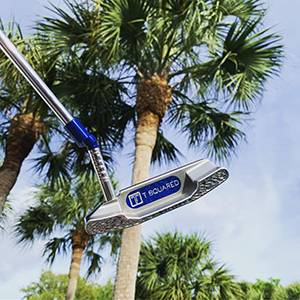
When 17-year-old Tony Tuber became fascinated with putters, he discovered that his father’s manufacturing business, which machines surgical and dental instruments, could create putters with tolerances that were on par with coveted, limited-edition models. T Squared Putters makes each club by hand in upstate New York from US stainless steel and offers custom options such as Teflon inserts and personalized engraving and painting. The company can also treat its metals with a proprietary thermal chemical diffusion for a matte-black finish that is resistant to wear. From $400; tsquaredputters.com

Almost a decade ago, ECCO revolutionized the golf shoe industry with the release of its spikeless, hybrid Golf Street model. The style has since become as prominent—if not more so—than traditional spiked soles. The new ECCO BIOM G3 Golf Shoes are a reimagined, spiked variant of the Biom Hybrid 3 GTX, which serves as a reminder that classic golf spikes are not obsolete. The shoe features a stretchable and soft doublelayer neoprene collar and a yak-leather upper bonded to the outsole in a proprietary way, which makes the shoe flexible, durable, and lightweight. $250; eccousa.com
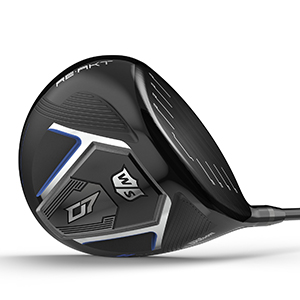
Can a driver that offers no adjustability be cutting edge and compete with drivers that do? Made of a layer of DuPont Kevlar sandwiched between carbon fiber, the crown of the new Wilson Staff D7 Driver neutralizes vibration and produces a sharp, crisp sound. The clubhead was stripped of nearly 25 grams of weight; that mass was reintroduced through internal weights strategically positioned forward in the 9-degree model (designed for players with fast swing speeds); in the middle for the 10.5-degree model (for moderate-to-fast swing speeds), and farther back and toward the heel in the 13-degree model (for slower swing speeds). $300; wilson.com
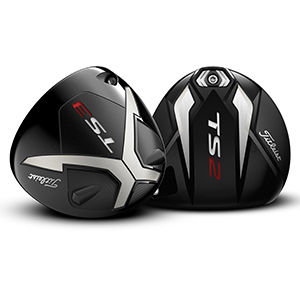
Titleist TS2 and TS3 drivers feature a titanium crown that is 20 percent thinner than the brand’s previous 917 models, as well as a clubface that is lighter than those older models thanks to a variable-thickness design. Each driver is equipped with the brand’s SureFit hosel, a feature made up of 16 independent loft and lie settings, which assure a precise fitting experience. Choose the TS2 for a high-launching, low-spinning club with a fixed center of gravity thanks to an unmovable weight positioned at the rear of the sole. TS3 is a mid-launch, low-spin option that offers an adjustable weight system to calibrate for draw or fade biases. $500; titleist.com
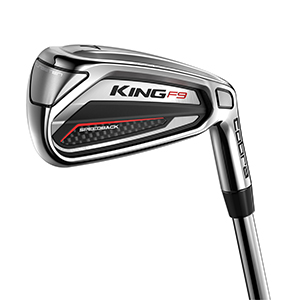
According to Tom Olsavsky, Cobra Golf ’s vice president of research and design, gameimprovement irons have historically forced golfers to choose between forgiveness and maximum distance. The new Cobra Speedback Irons deliver on both fronts thanks to a steel belt that wraps around the back of the iron and increases MOI by as much as 10 percent in long irons. A combined 33 grams of tungsten was added to the toe and heel in the 4-, 5-, 6-, and 7-irons. “That’s driving the CG down,” Olsavsky says, “so you’re getting quick-launching and steep-landing shots with great distance.” $800; cobragolf.com
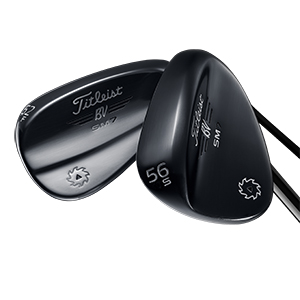
Master wedge craftsman Bob Vokey expands on his most current SM7 design, which repositions the center of gravity relative to each wedge’s loft, with a new color—the limited-edition Slate Blue wedges. He has also made the Vokey SM7 Raw line and Hand Ground program available to the general public, offering the same custom-grinding work that many Tour players request. “How many opportunities does the average player have to get up and down?” Vokey asks. The answer is a lot. “Being fit for the proper wedge with the right grind, it can help them,” he says. “The short game is an art, and wedges are the paintbrushes.” $195; vokey.com
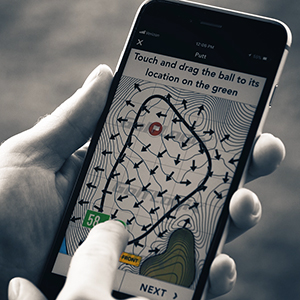
The GolfLogix app, designed as a digital caddie, utilizes proprietary 3-D mapping of greens on more than 13,000 courses (all measured to within a centimeter in accuracy) and diagrams the correct line to make a putt, displaying the putt’s total distance, elevation change, break, and optimal aim point. “This is like having an extremely experienced caddie with you every time you play,” says Pete Charleston, the company’s president and co-founder. “It removes any indecision about the putt that you have to hit.” $50/year; golflogix.com
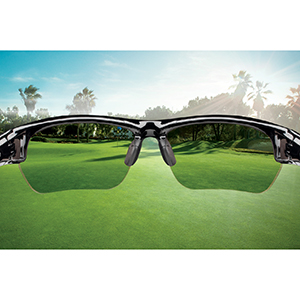
The Under Armour Eyewear collection of Tuned Golf lenses features a custom rose-colored tint with blue coating, which filters light to better reveal the detailed undulations of a course (specifically on the green). The lenses are also fit into the brand’s fashionable and sporty frames, which allow golfers to enjoy better performance without sacrificing personal style. From $100; underarmour.com
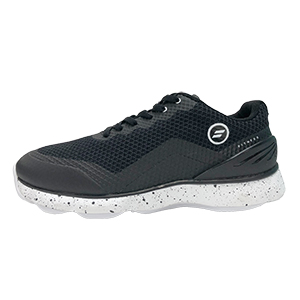
Many training aids measure where and how golfers exert pressure through their feet during the swing, but golfers can’t realistically bring those pressure mats onto the course. IOFIT Smart Shoes, however, are equipped with pressuresensor technology in the midsole and, through a Bluetooth connection to the shoe’s app, can track a player’s balance, weight shift, and center-ofpressure pattern, all in real time. $270; iofitshoes.com

To use the Blast Motion training aid, attach its motion capture sensor to the butt of a club and measure key metrics: For full swing, the sensor measures backswing time, downswing time, clubhead speed, and tempo; for putting, it measures 11 metrics including rotation change and impact stroke speed. Originally engineered for putting and full swings, the system will soon be able to measure the abbreviated swings that make up much of the short game too. $150; blastmotion.com

When Mother Nature doesn’t cooperate, Galvin Green attire can make all the difference. From thermal, skintight base layers that provide optimum warmth to outer shell layers made from proprietary synthetic materials that are soft and stretchy, breathable, windproof, and waterrepellent, the line of golf clothing provides a layering solution that can handle any weather scenario. Even the brand’s cold-weather golf gloves stand out for their exceptional quality and warmth. What’s so great about playing in cold weather, you ask? The answer: never feeling the cold. From $60; galvingreen.com
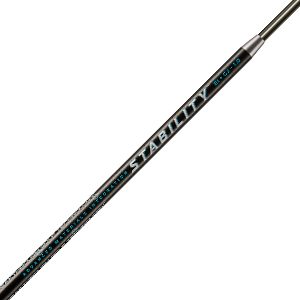
Breakthrough Golf Technology, a new venture helmed by Barney Adams, founder of Adams Golf, has created the Stability shaft, which delivers the putter face squarer at impact so putts stay more on line. The product features a low-density aluminum insert to reinforce flexural rigidity and a versatile aluminum connector, all encompassed by an eightlayer wrap of carbon fiber with a no-taper design to reduce torsional rotation. Expect improved accuracy, feel, and the ability to consistently control distance. $200; breakthroughgolftech.com
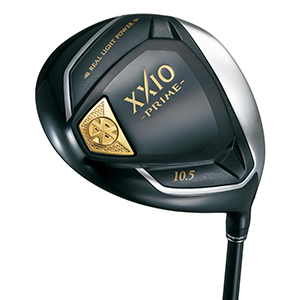
Built for players with slow to moderate swing speeds, the XXIO Prime Driver features a graphite shaft accented by carbon fiber. Its lower weight (36 grams), longer length (46.5 inches), and softer tip make it easier for golfers to keep the clubface square at impact. Its titanium clubface is also thinner and stronger than previous models, which increases a shot’s ball speed. Accomplished players with fast swing speeds will likely find it difficult to feel where the clubface is pointing during the swing (and at impact), which is why the XXIO Prime is ideally suited for those looking for a little more distance and focused only on hitting it straight off the tee. $850; xxiousa.com
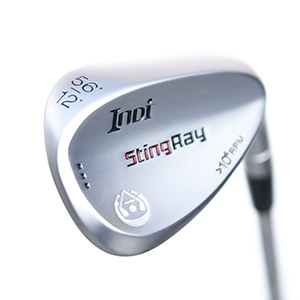
The large, open square grooves on the Indi Golf StingRay Wedge maximize spin and, although they are illegal in tournament play, makes casual rounds more fun. For competition, the Southern California–based company created the StingRay TT wedge with conforming grooves, which they assert increase spin by 20 percent over most other wedges on the market. Both wedges feature Indi Golf ’s proprietary ScoopBack design to create maximum forgiveness by moving mass higher in the face and toward the toe. $160; indigolfclubs.com
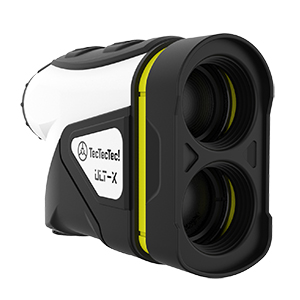
Accurate to within a third of a yard from distances as far 300 yards away, the TecTecTec ULT-X can also capture distances of larger items, like hazards, as far as 1,000 yards away. Like the market’s other major players, this rangefinder offers target-locking technology (conveyed via vibration) and has the ability to calculate changes in elevation through an optional slope setting. That it’s priced hundreds of dollars less than its competition is only due to the French manufacturer’s commitment to selling directly to consumers. $250; us.tectectec.com
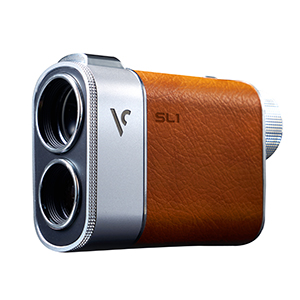
The hybrid design of the Voice Caddie SL1 utilizes both laser and GPS technology. The GPS addition is important, as it allows users to view hole layouts on a color LCD screen just below the viewfinder. Those layouts provide general yardages to the front, middle, and back of greens, as well as offering a color-coded map of the green’s undulation, spotlighting the highest, middle, and lowest points on the putting surface. $500; voicecaddie.com
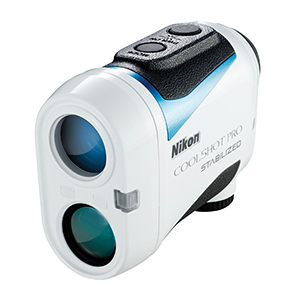
The waterproof and fog-proof Nikon Coolshot Pro can deliver accurate readings from 8 to 1,200 yards away in less than half a second. ID (incline/decline) technology displays both the actual distance and the slope-adjusted distance, which over time can condition golfers to better approximate those differences without the device’s assistance (a necessary skill when playing in tournaments). And rather than feeling a vibration, users see a green-lit circle around the flag to confirm that the laser is locked on the appropriate target. $450; nikonsportoptics.com




